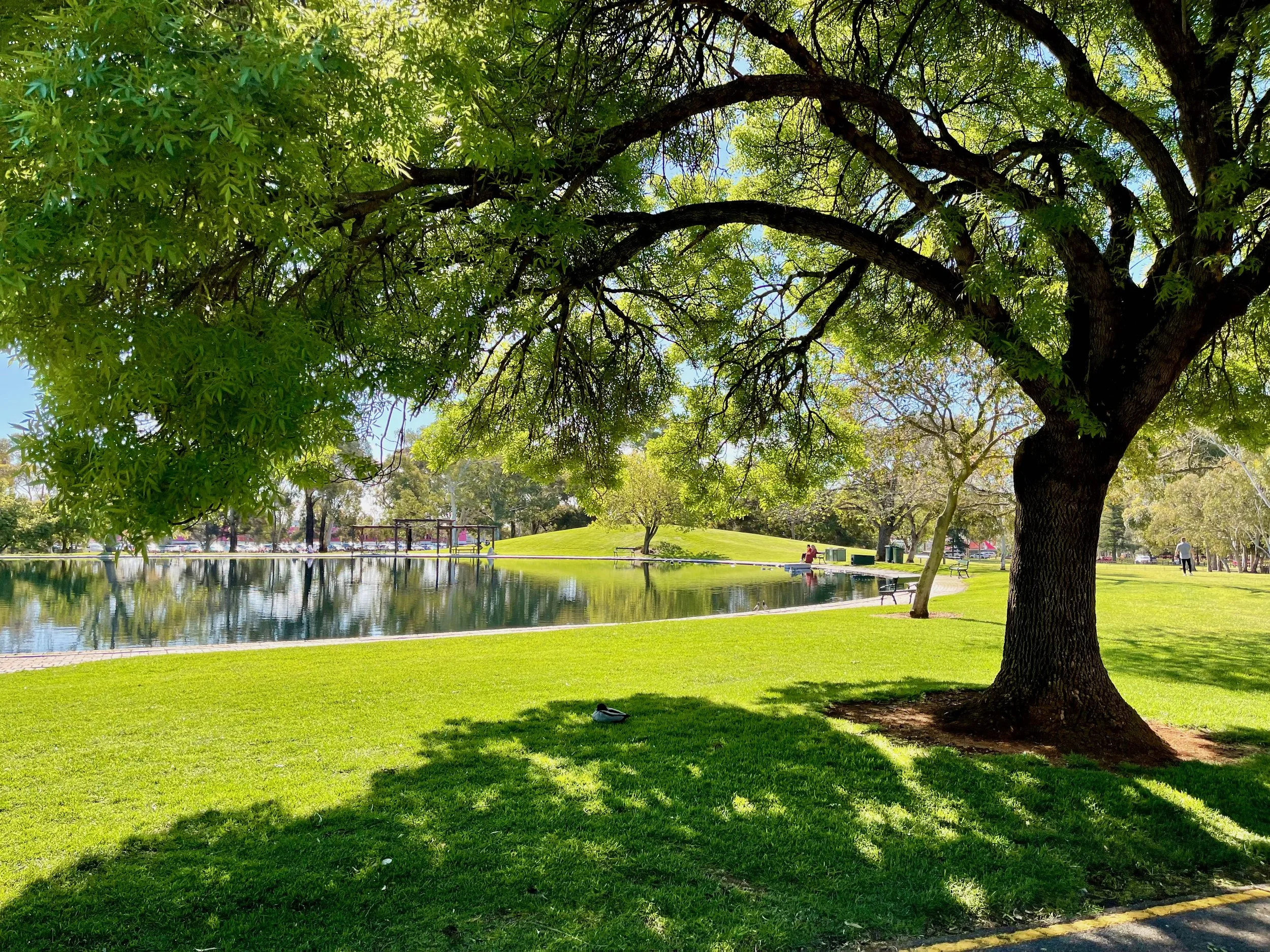by Carla Caruso
Australia was ranked last among developed nations on climate action in a report released last month.
In the lead-up to the United Nations’ climate summit, COP26, the Climate Council labelled our nation a “villain” internationally unless it provides “a much stronger commitment to cutting emissions this decade”.
Days later, the State Government offered tokenistic support in Adelaide’s fight against climate change – $5 million in funding to create “a cooler, greener, wilder, and more climate-resilient CBD”.
The money will go towards targeted street plantings, green wall and roof grants, a new ‘cool corridor’ of greened streets through the heart of the CBD, and a water rebate program.
The press release by Environment Minister David Speirs made no mention of your Park Lands. It made no reference to helping rejuvenate or claim back any of your previously-lost Park Land. Open Green Public spaces are an important piece of the puzzle in the battle against climate change.
As America’s National Recreation and Park Association says: “Parks reduce harmful carbon pollution that is driving climate change, they protect people and infrastructure from [severe weather], and they also directly reduce some of the primary public health challenges that are exacerbated by climate change.”
So, to make up for the State Government’s lack of Park Lands acknowledgement, we thought we’d ask a few APA representatives about their favourite parks and why they really are the lungs of our city.
APA president Shane Sody with Trish Russell at the Save Helen Mayo Park picnic rally in October.
Shane Sody, APA president
“I am the Park Ambassador for Bonython Park / Tulya Wardli [Park 27]. I love the way that this park is so versatile. It’s a real community resource; a hub for so many popular events – circuses, concerts, music festivals etc.
“At the same time, it has a popular playspace for children, and is one of the best picnic venues in Adelaide with large lawned areas and picnic tables.
“Finally, and most importantly, the river and especially the billabong make it a haven for so many water birds – coots, moorhens, ducks, swamphens, and even pelicans.
“The versatility of this park makes it such an integral part of the world-unique Adelaide Park Lands.”
This model boat pond is a popular feature at Bonython Park / Tulya Wardli. Photo: James Elsby.
Peter Sansom, APA committee member
“As a city resident without a garden, the Park Lands are essential to me. My local park, Veale Park / Walyu Yarta (Park 21), would be one of my favourites.
“Most of all, I enjoy the formal garden style of Veale Gardens, the expanses of lawn, the variety of trees, and the various water features and small creek with the little fish and plentiful dragonflies in the summer. There is always a large variety of bird life too.
“It’s always great to walk through the Walyu Yarta Community Garden and see what is growing there.
“The large playing fields, surrounded by scrubby areas and gum trees, allow me to smell the eucalyptus and just be in a large open space with views of the hills. It’s a park for all seasons and has a lot of history.”
This fountain, featuring a sculpture of the mythical god, Pan, is a centrepiece of Veale Gardens. Photo: James Elsby.
Ted Jennings, APA committee member
“Victoria Park / Pakapakanthi (Park 16) is part of my commute into town. One of my pet peeves in the world is paying for parking, so I commute by bike 95 per cent of the time and I’m always in the CBD.
“I’m also involved with the group, Reimagining Victoria Park, lobbying to get the park regreened. I don’t want to rip up all the [racing] infrastructure, but it needs some more trees because it’s turning into a bit of a heat sink.
“We do think there should be a memory of its horse racing and car racing [past]. There was even once an ostrich race there... There needs to be some sort of reminder of Adelaide in its heyday but now it’s time to start picturing Adelaide as the city that is surrounded by Park Lands.”
One thing Ted is glad to see the back of is the Super Hornets that’d fly over to celebrate the car races. “[I’m] friends with people who have escaped the horror of warzones, only to resettle in a nation which celebrates a car race this way … simulating what it was like in the country they escaped.”
Ted Jennings and his children, Alice and Nate, under the tree they call ‘Tabitha’ in Victoria Park / Pakapakanthi. Photo: Sunday Mail.
One of Ted’s favourite spots at the park is a partly fenced area, with remnant native grasses, which provides a habitat for the rare chequered copper butterfly. “They blend in really well. But once you see them the first time, you’ll see them everywhere.”
As well, Ted says: “There’s a tree in Victoria Park that I really like, so I’ve kind of adopted it. I’ve even given it an Instagram page, @adelaides_lungs.
“By adopting a tree and and naming it after a big fluffy cat I met [Tabitha], I’m hoping that people will see these trees as more than, I hate to say it, just a tree. That tree converts carbon dioxide into oxygen, it provides shade etcetera, etcetera. It’s more than a tree.”
Ted is part of a group pushing for more trees in his beloved Victoria Park / Pakapakanthi. Photo: James Elsby.









